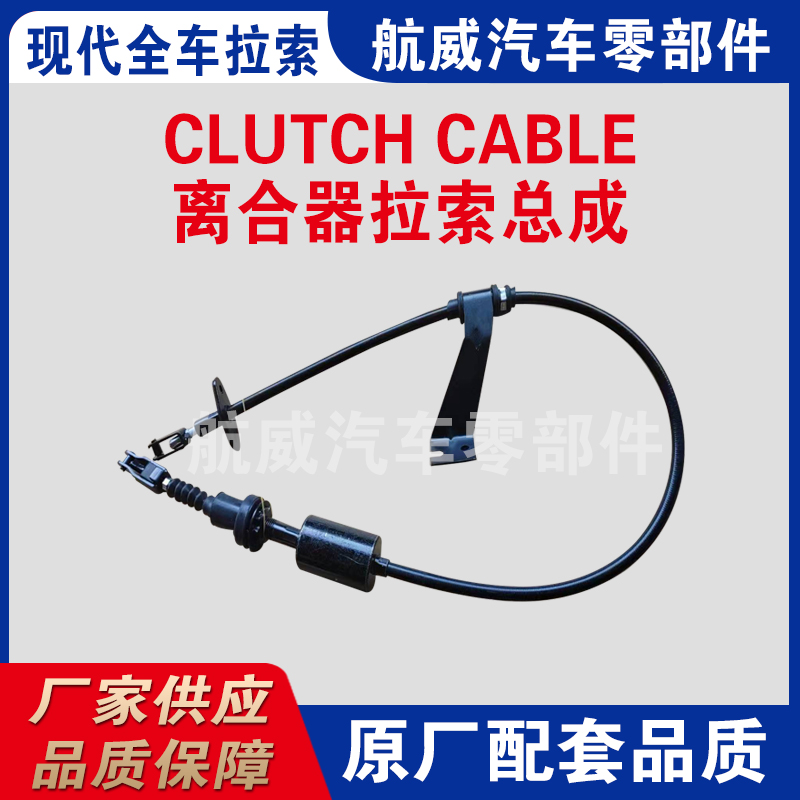throttle cable linkage
Understanding Throttle Cable Linkage A Crucial Component in Engine Performance
Throttle cable linkage is an essential component in the operation of many internal combustion engines, particularly in automotive applications. It serves as the physical connection between the accelerator pedal and the throttle body of an engine, translating the driver's input into engine performance. This article will explore the function, design, and importance of throttle cable linkage, emphasizing its role in vehicle dynamics and driver experience.
What is Throttle Cable Linkage?
At its core, throttle cable linkage is a mechanical system that includes a cable and various linkages that connect the accelerator pedal to the throttle valve of an engine. When a driver presses down on the accelerator, the cable pulls a lever that opens the throttle valve, allowing more air to enter the engine. This increase in air intake enables the engine to produce more power, translating into an increase in speed and acceleration.
Throttle cable linkages can be categorized into two primary types mechanical and electronic. In mechanical systems, such as traditional cars, the cable is often made of a durable material that can withstand friction and wear. Electronic throttle controls, increasingly common in modern vehicles, rely on sensors and motors to achieve similar results without a physical cable. However, many performance enthusiasts still appreciate the tactile feedback provided by mechanical systems, highlighting the connection between driver input and engine response.
Design and Functionality
The design of a throttle cable linkage can vary significantly depending on the vehicle’s specifications and intended purpose. Typically, the linkage consists of the throttle cable itself, which runs from the pedal to the throttle body, along with various pulleys and levers that ensure smooth operation. Proper installation and adjustment of this system are vital; if the cable is too loose, the throttle may not respond adequately. Conversely, if the cable is too tight, it could lead to unintended acceleration or excessive strain on the components.
One common challenge in throttle cable systems is ensuring smooth and precise operation, especially in high-performance contexts. Drivers often seek immediate responsiveness from their vehicle, which means that any delays in the throttle response can be detrimental. Consequently, high-performance vehicles often employ specially designed throttle cable linkages that minimize friction and enhance reaction times.
throttle cable linkage

Importance in Vehicle Dynamics
Throttle cable linkage plays a crucial role in the overall dynamics of a vehicle. It directly affects acceleration and deceleration, influencing how a car responds to driver inputs. A well-functioning throttle cable linkage enables precise control over engine power, resulting in improved handling and safety.
Moreover, the quality of throttle response significantly impacts the driving experience. Drivers expect their cars to handle predictably and responsively, and a malfunctioning throttle cable can lead to unintended acceleration or sluggish performance, posing risks to the driver and others on the road. Regular maintenance of the throttle cable is essential in preventing such issues and ensuring optimal vehicle performance.
Maintenance and Troubleshooting
To maintain a properly functioning throttle cable linkage, regular inspections are recommended. Observing the cable for any signs of fraying, binding, or damage is crucial. Drivers should also ensure that the cable is lubricated appropriately to minimize wear and ensure smooth operation.
If a driver experiences issues with throttle response, such as hesitation or stalling, it may indicate a problem with the cable or its connection points. Troubleshooting can involve checking the tension of the cable, examining the attachment points for wear, and ensuring that there are no obstructions in the cable's pathway.
Conclusion
Throttle cable linkage, whether mechanical or electronic, is a vital component of vehicle performance that directly impacts acceleration, handling, and driver experience. Understanding its function and importance enables drivers to appreciate how their inputs translate into vehicle dynamics. Regular maintenance is essential to ensure that the throttle cable linkage operates smoothly, contributing to a safe and enjoyable driving experience. As automotive technology continues to evolve, the fundamental principles behind throttle control remain critical for performance and efficiency.
-
Workings of Clutch Pipe and Hose SystemsNewsJun.04,2025
-
The Inner Workings of Hand Brake Cable SystemsNewsJun.04,2025
-
The Secrets of Throttle and Accelerator CablesNewsJun.04,2025
-
The Hidden Lifeline of Your Transmission Gear Shift CablesNewsJun.04,2025
-
Demystifying Gear Cables and Shift LinkagesNewsJun.04,2025
-
Decoding Clutch Line Systems A Comprehensive GuideNewsJun.04,2025
